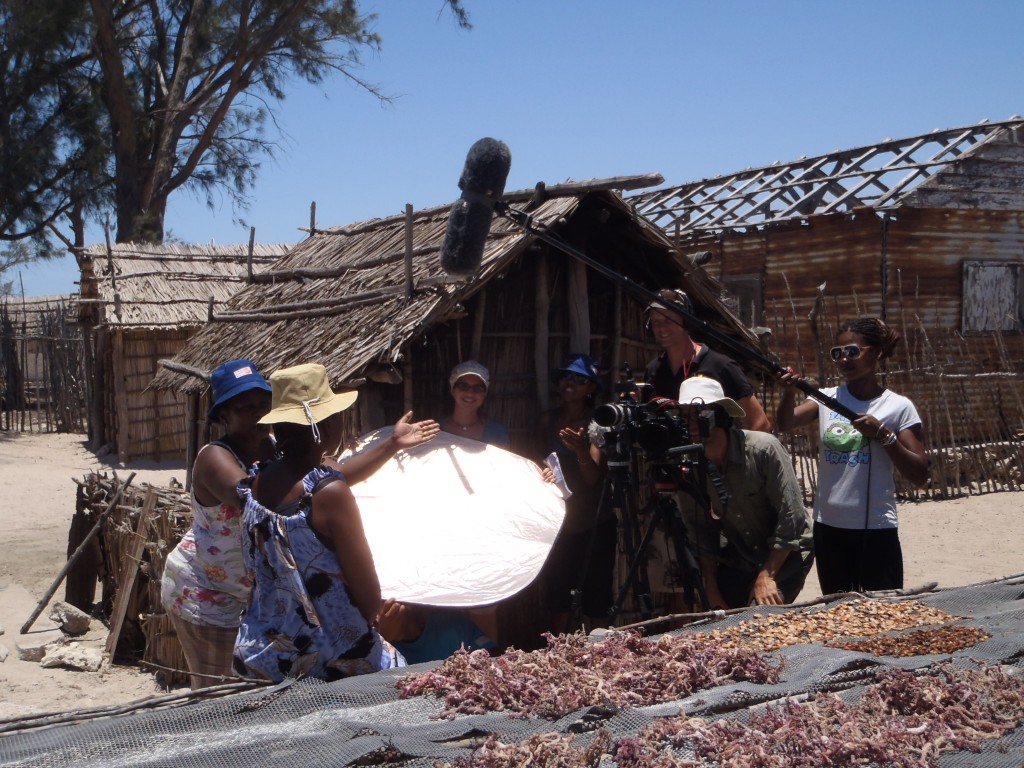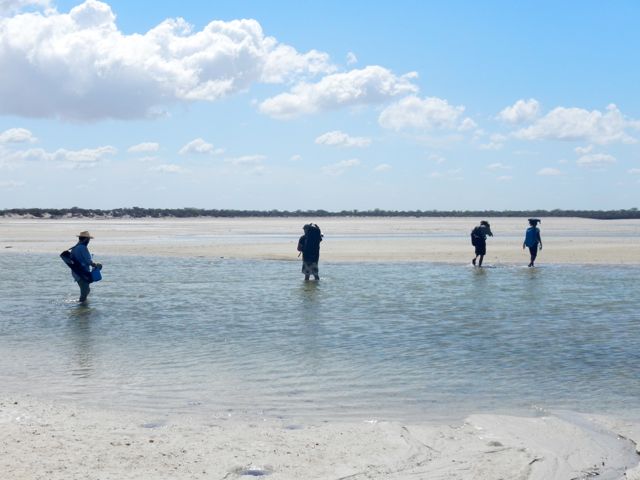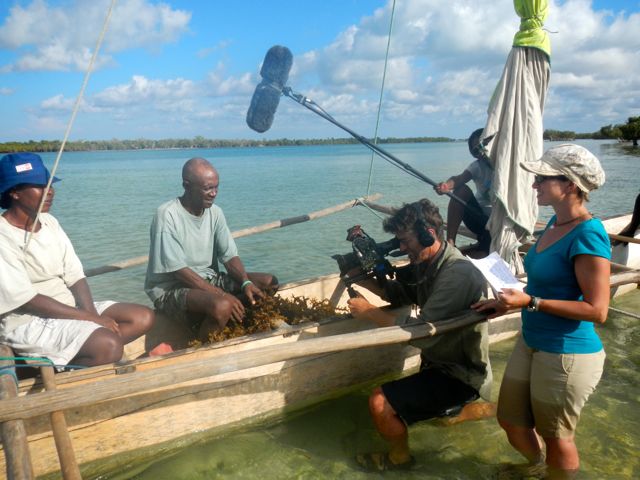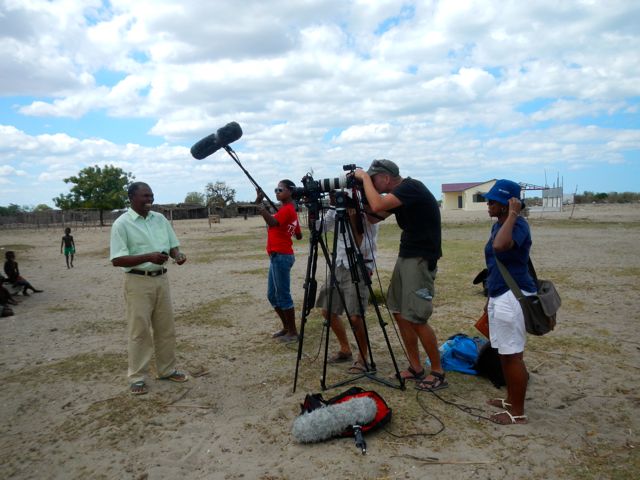By Caroline Savitzky, Community Health Programme Coordinator, Velondriake, Madagascar
After years of wanting to tell the story of Blue Ventures’ integrated Population-Health-Environment approach in a visual and personal way, the opportunity has finally arrived. Following an incredible team effort to brainstorm the narrative and organise a filming schedule involving diverse community members, in multiple locations and engaging in a variety of activities, the moment was upon us at the end of November 2013… Renowned environmental filmmaker, Chris Scarffe, joined us in Velondriake for a whirlwind ten days of filming!
As I met with Chris on the first day, it was clear that planning and timing were going to be of the essence. However, planning and timing can be extremely challenging in an environment where life depends on the sea, the tides, the wind, the fish, and the many family and community obligations of each person. We exchanged our most hopeful convictions that all would go smoothly and at the end, once it had indeed all gone incredibly smoothly, we each admitted our initial uncertainty! Luckily, our team was seasoned, understanding, good humoured and limitlessly patient.

The all-star team from left to right: Noavy (community health worker and seaweed farmer – speaking to the camera), Balbine (community health worker and supervisor), Caroline (community health programme coordinator), Fanja (community liaison officer), Chris, (independent filmmaker and producer), Garth (blue forests specialist and talented photographer), Felicia (audiovisual assistant)
Although we had drafted a detailed storyboard, we wanted to hear people’s own perspectives and experiences. We filmed staff and community members carrying out their daily work and lives, and interviewed them with two or three questions to draw out their thoughts and expertise. The results were inspiring. I had no idea that working in direct Madagascar summer sun and organising logistics with no guarantees could be so fun and motivational! This was truly my chance to help create a backdrop for my colleagues, friends and neighbours to showcase their work and their passions for all the world to see.
We started at 5am each day to make the most of the beautiful dawn sunlight. We filmed straight through the day, often struggling against the harsh midday sun to capture needed footage, and frantically shot as much as we could during the golden hours of the evening. Once the sun set, we transitioned directly into planning the next day’s schedule, checking shot and interview lists, and doing interview translations by candle or flashlight.

At times it seemed like a comedy of errors, with an unexpected rain shower (one of the first of the year) arriving out of nowhere as we set up for the very first moment of filming, or arranging a perfectly planned boat journey to the village of Lamboara only to find that we had worked out the tides completely wrong and had to walk across the bay with every bit of equipment. These could have turned into trying times of frustration but, as already noted, we had an all-star team, so these proved to be humorous moments that kept us laughing through the sweat of the midday sun.
Throughout these challenges, what I found most comforting and welcome was the commitment to the spirit of the film and the respect for everyone involved. Filming can be extremely intrusive, and it could be easy to get lost in the need to get things done quickly and efficiently. I was so pleased to find that everyone involved recognised the need to go slowly, to follow protocol and local traditions, to ensure full consent and understanding, and to film in a way that was sensitive and comfortable to all involved.

But that’s enough about what happened behind the scenes! Without a doubt, the community members and Blue Ventures staff featured in this film are the super-stars. They shine in their work, which I see every day, but I worried about how to ensure that this came through on camera. However, once the film is released, you will see for yourself, I needn’t have worried. Every participant was as natural and dynamic on camera as they are in person – a talent I certainly do not share!
Once we began to ask questions about people’s lives and work, nobody needed a moment before launching into exactly what they do, why the approach of integrating reproductive health services with community conservation is so needed and so effective, and how it impacts their daily lives. In fact, our biggest challenge in the end was cutting everything to fit a 10-minute film rather than just deciding to produce an hour-long feature!

One of our goals with this project is one that I think can sometimes be forgotten with such endeavours; ensuring that this film is brought back to our partner communities for everyone here to enjoy. Indeed, our biggest commitment in this work is to them. Over the next few months we will be incorporating the film into our village outreach tours and, as we did with each individual participant during filming, we will spend significant time explaining the purpose of this film and how it will be used. This will be a chance for communities here to see how their experiences serve as a model and an inspiration for others around the world.
I went into this process with the goal of communicating our perspectives and experiences of PHE in a way that will help other communities and organisations to work in a similarly holistic way. I am leaving this experience more convinced than ever that I am surrounded by all-stars and that they are ideally placed to inspire and support others interested in implementing effective PHE programmes. PHE works – and they will show you how and why!
You can now watch the film here.

